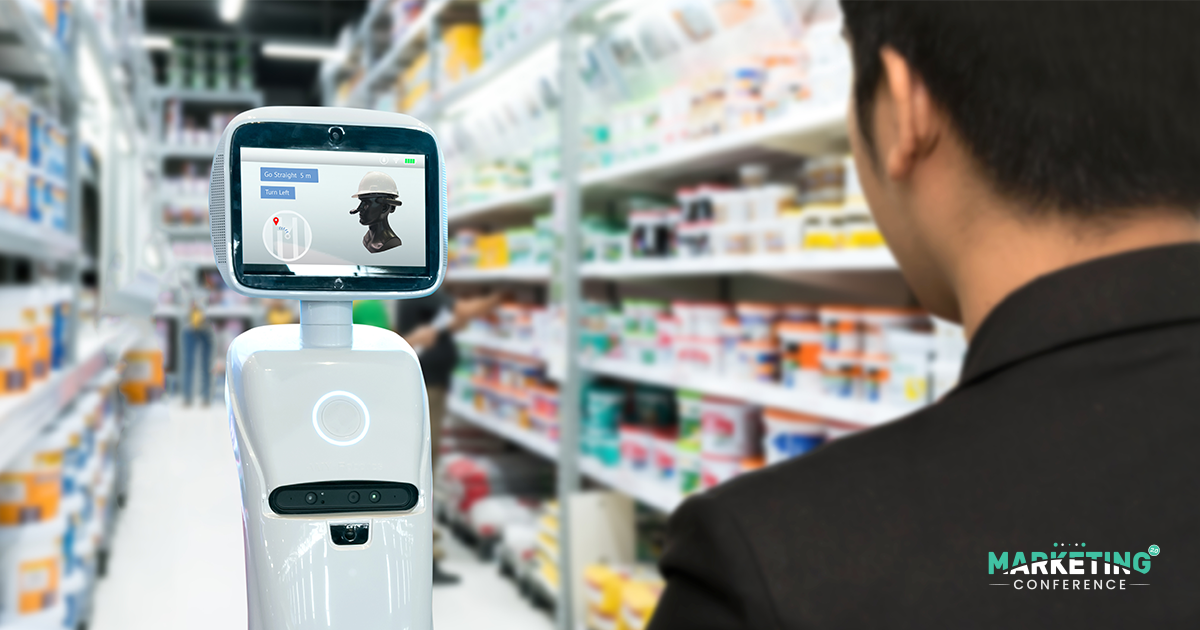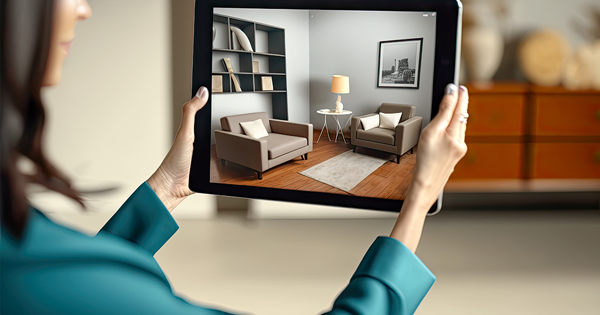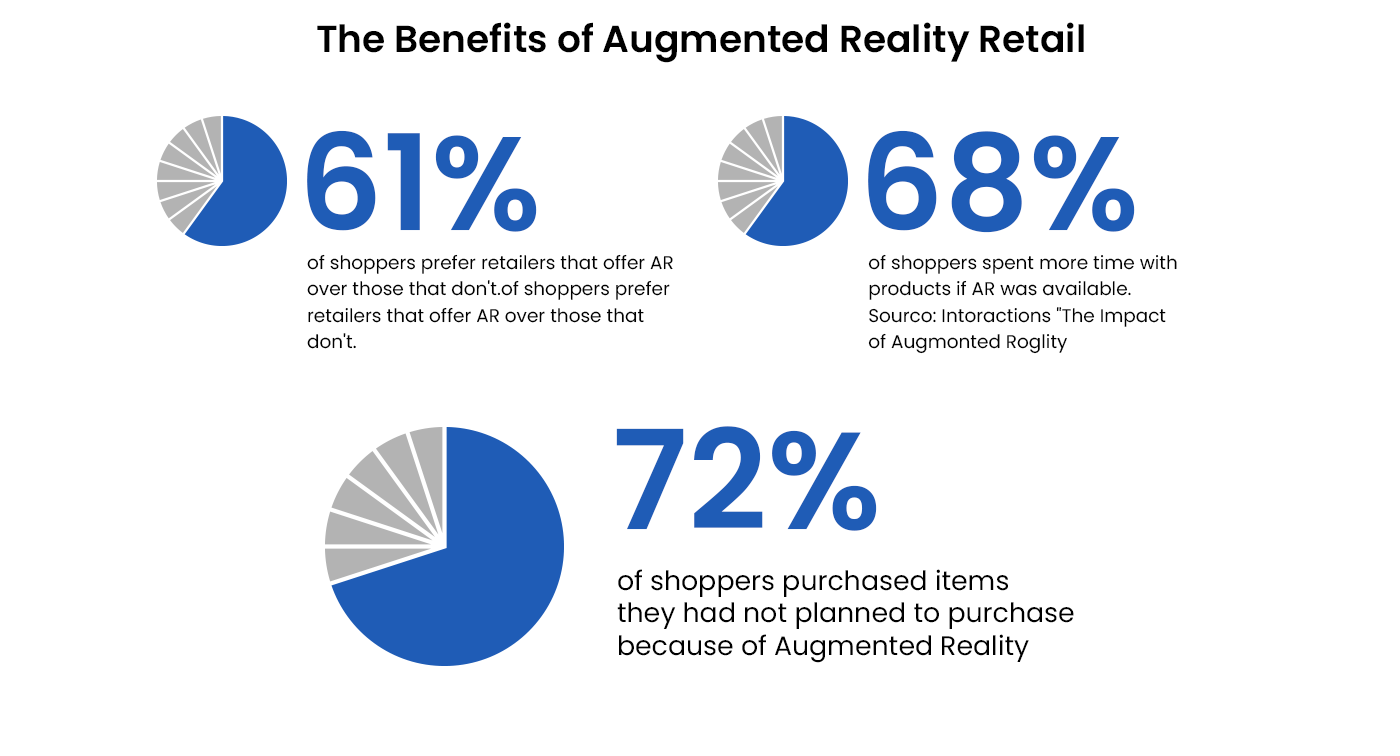
In 2024, the buzzword in every tech-forward retail strategy meeting is unmistakably Augmented Reality (AR). This transformative technology, which received ample spotlight at global digital marketing conferences such as the Marketing 2.0 Conference, is reshaping the traditional shopping paradigms. By seamlessly integrating digital enhancements with physical reality, AR is not merely an accessory but a fundamental game-changer in the retail industry. In this blog, let's uncover how AR is revolutionizing your shopping experience, making it more interactive, personalized, and engaging than ever before!
Immersive Shopping: The AR Impact
Imagine you are strolling through an electronics store, eyeing a high-tech gadget. With AR, you can interact with the product through your smartphone, accessing detailed specifications, seeing it in action, or even exploring its internal components layer by layer. This depth of interaction is revolutionizing consumer engagement, making shopping an immersive and informative experience.
Retailers are embracing AR to offer these enriched experiences, which not only help reduce the ambiguity in shopping decisions but also significantly enhance customer satisfaction. For instance, AR mirrors in fashion retail allow customers to try on clothes virtually, providing a fast and personalized shopping experience. This technology is particularly advantageous in today's fast-paced world, where time is precious and consumers are increasingly looking for efficiency in their shopping endeavors.
From Visualization To Customization: The Power Of AR

AR's capability extends beyond visualization; it personalizes the experience to unprecedented levels. Customization options allow consumers to alter colors, patterns, or features of products like furniture, watches, or even cars in real-time, right before their eyes. This ability to 'create' products tailored to individual tastes not only boosts consumer confidence in their purchasing decisions but also significantly drives up conversion rates for retailers.
One of the anticipated marketing leaders' summits in Dubai, the Marketing 2.0 Conference, highlighted insights into consumer behavior and illustrated that personalized experiences promote deeper connections between brands and consumers, leading to higher retention rates. Retailers leveraging AR technologies are witnessing increased loyalty and more frequent interactions with their customers, as these experiences often turn into memorable events that shoppers are eager to share with others.
Bridging Digital And Physical Retail
One of the most compelling discussions lately in the world of digital marketing conferences across the world focused on how AR bridges the gap between online and offline worlds. Through AR-enabled apps, customers can receive a guided tour of a store, check stock availability by pointing their phone at an item, or even receive tailored suggestions based on their in-store location and past shopping behavior.
This integration caters to a new generation of shoppers who expect seamless transitions between online browsing and in-store purchasing. Retailers that can blend these two worlds effectively are setting new standards in consumer satisfaction and loyalty.
Augmented Reality Enhances Real-World Interactions
Retailers worldwide are utilizing AR to transform consumer interactions with products. For instance, AR tools enable shoppers to visualize how furniture would fit and look in their homes or how a pair of glasses might suit their face shape. This interaction not only boosts confidence in purchasing decisions but also reduces the likelihood of returns, creating a beneficial scenario for both shoppers and retailers. Insights like these are often shared at global events such as the Marketing 2.0 Conference, an anticipated marketing leaders summit in Dubai, sparking lively discussions on technological integration in retail.
Tailoring The Shopping Journey With AR
Augmented Reality is pivotal in personalizing the entire shopping journey. Retailers can now use AR to design dynamic paths within their stores, guiding customers to items they find interesting while offering personalized discounts and promotions. This tailored approach not only delights shoppers but also enhances the effectiveness of marketing strategies, making AR a hot topic among industry professionals.

Source- Grand View Research
Seamless Omnichannel Experiences
As the retail sector continues to evolve, AR is proving invaluable in bridging the gap between online and offline channels, ensuring a seamless omnichannel shopping experience. Customers can access virtual showrooms or visualize how products look in different environments, seamlessly integrating physical and digital shopping realms. This coherence helps retailers maintain consistency across various platforms, providing a smooth and unified customer experience whether they shop online or in-store.
In Essence
Reflecting on the technological advancements shaping our shopping habits today, it’s evident that Augmented Reality is spearheading a significant shift in the retail landscape. As we advance further into 2024, AR isn't just a tool enhancing the shopping experience; it is redefining it entirely, making each interaction more engaging, personalized, and immersive.
As per experts at the global marketing leaders’ summit in Dubai, the Marketing 2.0 Conference, AR is establishing itself not only as a novelty but as a necessity in the modern retail environment. The question now isn't if AR will permeate our everyday shopping experiences but rather how swiftly we will adapt to this new era of interactive shopping. Are you ready to embrace this exciting future? Discover the latest trends at the Marketing 2.0 Conference! Join us in Dubai Winter 2024 and USA 2025 to dive into the future of marketing
FAQs
- What are the key ways Augmented Reality (AR) is transforming the retail shopping experience in 2024?
Ans. AR is revolutionizing retail by enhancing customer interaction with products through immersive technologies. This includes visualizing products in real-time, trying on clothes virtually with AR mirrors, and customizing items like furniture and cars to individual preferences, significantly improving consumer engagement and satisfaction.
- How does AR help bridge the gap between online and physical retail spaces?
AR provides a seamless blend of digital and physical shopping by enabling features like in-store guided tours via smartphone, real-time stock checks, and personalized shopping recommendations based on location and past behavior, enhancing the overall shopping experience.
- What role does the Marketing 2.0 Conference play in advancing AR in retail?
The Marketing 2.0 Conference serves as a crucial platform for sharing insights and strategies on integrating AR into retail. Experts discuss how AR technologies can create deeper connections between brands and consumers, demonstrating its importance not just as a trend but as a staple in future retail environments.
- How does AR customization improve customer confidence and retailer conversion rates?
By allowing customers to modify product features such as colors and patterns, AR helps them visualize their choices in a real setting, boosting their purchasing confidence. This level of personalization has shown to significantly drive up conversion rates as customers feel more connected to the customized product.
- Can AR reduce the rate of product returns in retail?
Yes, by enabling customers to visualize how products like furniture or glasses will look and fit in their intended environment, AR minimizes uncertainties, thus reducing the likelihood of returns. This not only benefits consumers by enhancing decision-making confidence but also aids retailers in maintaining profitability.

